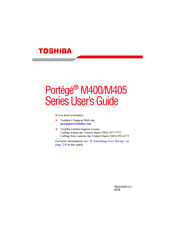Toshiba M400-S4035 Manuals
Manuals and User Guides for Toshiba M400-S4035. We have 1 Toshiba M400-S4035 manual available for free PDF download: User Manual
Advertisement
Advertisement
